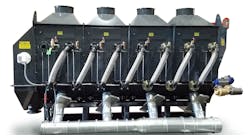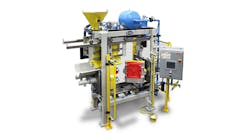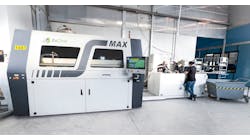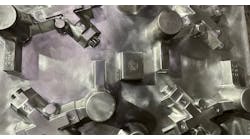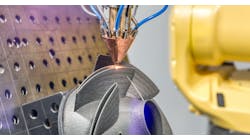Replica Civil War-era cannon involved authentic pattern designs, ductile iron castings
Clarksville Foundry, an iron foundry in Clarksville, TN, provides turnkey casting services — from project concept through interpretation of engineering drawings, to pattern construction, mold production and casting. In business since 1847, it’s also one of the oldest continuously operating foundries in the United States, and once (1861-62) manufactured cannons and munitions for the Confederate Army States of America. Recently, Clarksville Foundry put the full range of its capabilities to use in a project that commemorated that historic detail.
For the Civil War Sesquicentennial in 2011, Clarksville Foundry president Charles Foust Jr. obtained an original drawing of a Model 1841 6-Pounder Field Gun, and together with foundry workers created a pattern and cast a cannon barrel that was mounted on a Civil War-era carriage reproduction. The cannon is on display at Fort Defiance Civil War Park and Interpretative Center in Clarksville.
While assembling the newly produced barrel onto the replica carriage, foundry personnel noticed that the carriage was almost entirely made of iron castings, and began planning to cast their own version. They obtained engineering drawings for a No. 1 field gun carriage, which Clarksville Foundry patternmaker James Lumpkin used to build 13 patterns for the components of the carriage.
When Clarksville Rotary Club began planning for its 100th Anniversary in May 2017, it asked Foust to cast another replica for permanent display. Foust undertook plans to cast, fabricate, and assemble every part required for the complete barrel and carriage.
Casting of the carriage components began in September 2016. The barrel was the last component cast, poured in April 2017. After the completed cannon was unveiled at the Montgomery County Courthouse, Civil War re-enactors fired off blanks from the fully assembled replica.
“With more precise metallurgy and enhanced processes, replicas of historical items can become even more durable than the originals,” Foust noted. “It was a pleasure to produce this replica 6-Pounder, in order to demonstrate how casting processes have evolved since the 19th Century while providing a unique item to honor Clarksville Rotary Club’s 100th Anniversary. It’s been a lot of fun to do this and see the cannon take shape. It’s quite a feeling of accomplishment.”




